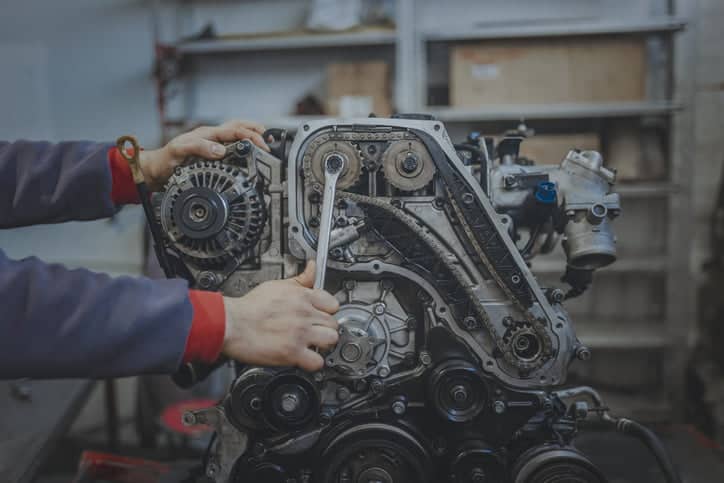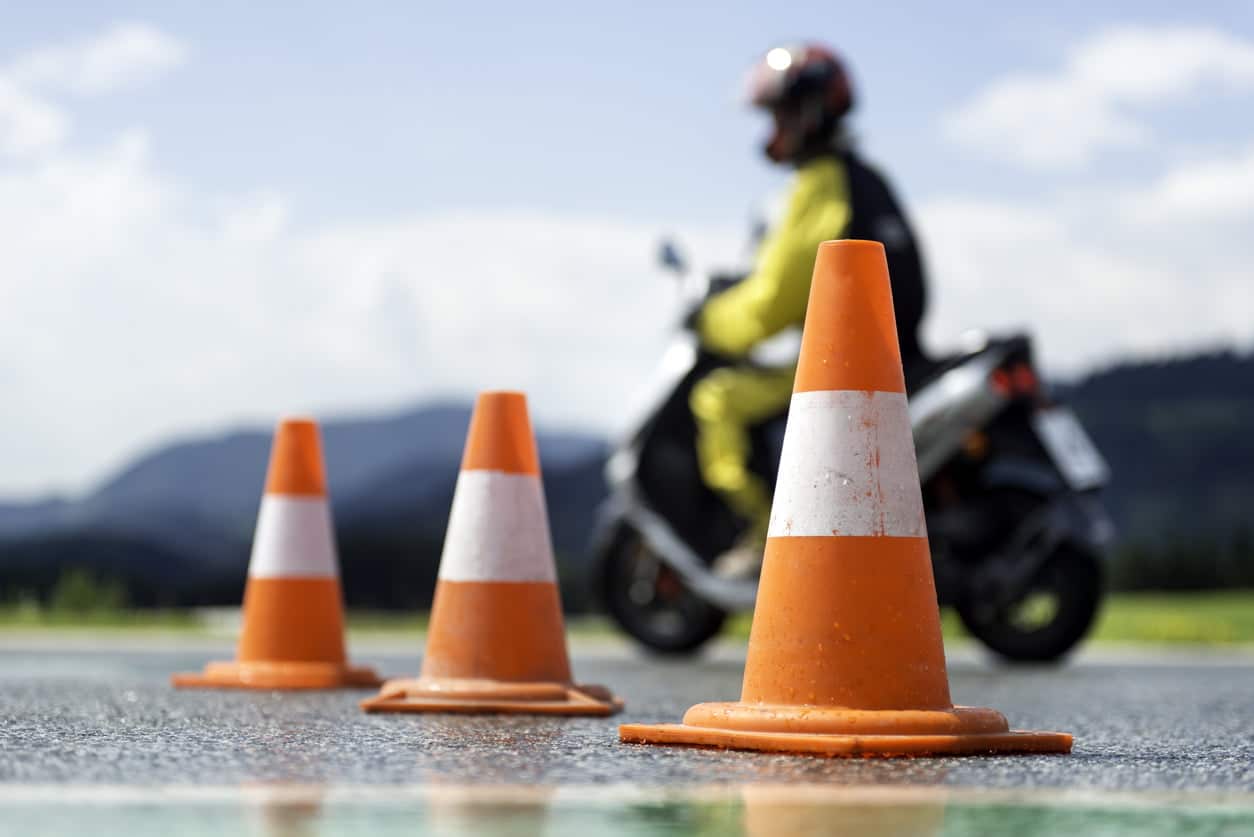Cheap, economical and fun, motorbikes are both a popular way to get from A to B and a great way to spend those sunny Sunday afternoons. But if you’re thinking of making the move to two wheels, you’ll need to get a licence – which can be more complicated than it sounds.
Unlike with a car, when a simple pass or fail on the practical can keep you off the road, the route to riding a motorbike is a little murkier. Yes, you can hit the road on a moped aged 16 (provided you take the CBT), but after that, how do you actually go about getting a licence?
To help you get a motorbike licence, we’ve put together this comprehensive guide, covering first steps, costs, and information on the testing process. Use the links below to navigate the guide.
Quick Links
- First Steps: Getting a Provisional and Passing the CBT
- Motorcycle Theory and Practical Tests
- How Much Does It Cost to Get a Motorbike Licence?
- How Old Do You Have to Be to Ride a Motorcycle?
First Steps: Getting a Provisional and Passing the CBT
If you’re 16 or older and want the freedom of riding a moped, the first thing you’ll need to do is apply for a provisional licence. This costs £34, and you’ll need a proof of address and your National Insurance number to apply.
Once you have your green provisional licence, you’ll be eligible to take the compulsory basic training (CBT) every new rider needs before heading out on a bike. The CBT is a training day that shows you how to ride and follow the rules of the road. The good thing is it isn’t a pass or fail test; you just need to complete the day’s training.

A CBT will set you back between £89-£100, which includes a day’s training, a CBT certificate, and hire of a moped and safety gear. If you already have a moped or motorcycle, it could cost less, but you will need to pay for insurance.
If you’re 16, a provisional licence and CBT means you can ride a 50CC moped. If you’re 17 or over, you can ride a moped or motorcycle up to 125CC, but you still need to display ‘L’ plates.
The thing to remember about the CBT is that it isn’t a test and doesn’t qualify you as a motorcyclist. It’s designed to get you on the road, so you can practice and work towards passing the full practical motorcycle test.
If you don’t take the practical test within two years of the CBT, you’ll need to do another day’s compulsory basic training before you’re legally allowed to ride again. This is to encourage riders to take the test and build on their learning and experience.
Motorcycle Theory and Practical Tests
If you’re serious about riding a bike and want one with a bigger engine, you’ll need to take the theory and practical tests, just like you would for a car. When you’ve passed these tests, you won’t need to display ‘L’ plates and you can ride a bike with a bigger engine (though this is age-dependent).
Below, we provide information on the motorcycle theory and practical tests, so you know what to expect and how to prepare.
Theory Test
The motorcycle theory test follows a similar format to the driving version. There are two parts to the test, including multiple-choice questions and hazard perception, whereby you’ll need to spot upcoming dangers on a POV-style riding video.
You’ll need to take the theory test before the practical test, but you can do it before or after the CBT. The test costs £23, and it’s highly recommended that you revise the Highway Code in preparation for it.
Practical Test
The practical motorcycle test comprises of two parts: an off-road test and an on-road test. The first part assesses how well you can control the bike, and the second tests how well you can ride independently while following the rules of the road.
The first part of the test lasts around 20 minutes and includes a number of control tests, including riding a slalom, making a U-turn, slow riding, and an emergency stop. The examiner will let you know if you’ve passed this part before moving on to the next test. (if you don’t pass this part are you even allowed to move onto the next section? I assume this is the criteria for passing the first part ‘You’ll pass the practical motorcycle test if you make no ‘major’ faults and no more than five ‘minor’ faults in the first section)
For the next part of the test, you’ll go out on the road with the examiner following you. They’ll give you directions and instructions over a two-way radio, and you’ll be asked to carry out manoeuvres like controlled stops, hill starts and pulling out from behind a parked vehicle.
You’ll pass the practical motorcycle test if you make no ‘major’ faults and no more than five ‘minor’ faults in the first section, and no ‘majors’ and no more than 10 ‘minors’ in the on-road part of the test.
Remember, the off-road test costs £15.50, while the on-road test costs £75 (rising to £88.50 on weekends and bank holidays).
How Much Does It Cost to Get a Motorbike Licence?
Below, we’ve broken down the costs of getting a motorbike licence, from the CBT to passing your practical test, assuming you already have a provisional licence:
- CBT – £89-£100
- Lessons – From £195-£615, depending on the duration of the course and the type of bike you want to ride.
- Theory Test – £23
- Practical Test – £15.50 for module one; £75 for module two (except £88.50 on weekends and bank holidays)
Total – £400-£800
This gives a rough guide of how much a motorbike licence is likely to cost. Some courses, such as Full Direct Access, will cost significantly more because they include more training hours, the CBT and both the theory and practical tests. Contact your local riding school for a quote on how much your licence will cost depending on your needs and requirements.
How Old Do You Have to Be to Ride a Motorcycle?
Sixteen is the minimum age for someone looking to ride a moped, but there are other age restrictions to discourage younger riders from jumping on powerful bikes too early. These restrictions are designed to keep younger riders safe, so they work up towards bigger and more powerful bikes.
In the table below, we’ve outlined the current bike categories, ages and licence requirements.
| Licence Category | Bikes You Can Ride | Requirements | Minimum Age |
| AM | Mopeds restricted to 45km/h | CBT (with ‘L’ plates, for max of 2 years); CBT with theory and practical test (no ‘L’ plates). | 16 |
| A1 | Light motorcycle up to 125CC | CBT (with ‘L’ plates, for max of 2 years); CBT with theory and practical test (no ‘L’ plates). | 17 |
| A2 | Standard motorcycle up to 35kW | Direct access route – theory and practical; Progressive access route – 2 years’ experience on A1 motorbike and practical test. | 19 |
| A | Unrestricted motorcycle | Direct access route – theory and practical (24); Progressive access route – 2 years’ experience on A1 motorbike and practical test (21). | 24 (Direct access); 21 (Progressive access) |
We hope this guide helps you when researching how to get a motorbike licence. For more bike and motoring related advice, visit the Redex blog and newsfeed. Or, if you’d like to learn about fuel additives and system cleaners that you can add to your motorbike, head to the homepage.
